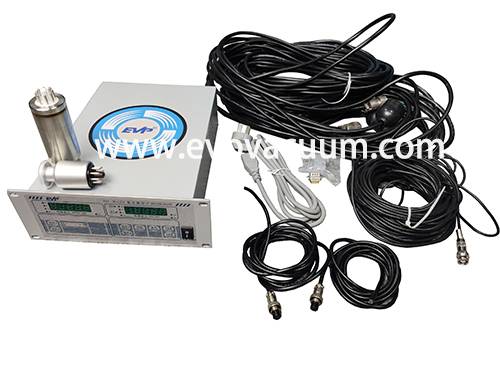vacuum gauge calibration method
There are absolute vacuum gauge and relative vacuum gauge. The latter can not directly calculate the pressure value from the physical quantity it measured. Therefore, in the use of relative vacuum timing, it is necessary to use absolute vacuum meter for vacuum meter calibration. Now EVP vacuum pump manufacturers will work with you to understand the vacuum meter calibration and its methods.
The essence of vacuum meter calibration is to calibrate a certain kind of gas relative to the vacuum meter under certain conditions, so as to obtain the calibration coefficient or calibration curve, so as to determine the reading of the relative vacuum meter and its approximate measurement range and accuracy. Therefore, the calibration of vacuum gauge needs corresponding comparison standards. At present, there are absolute vacuum gauge, absolute calibration system and sub standard vacuum gauge used in the calibration of vacuum gauge. The corresponding calibration methods include: absolute vacuum gauge calibration, static expansion, dynamic conductivity and sub standard vacuum gauge calibration.
In the absolute vacuum meter calibration method, all the absolute vacuum meters can be used as vacuum standards. The method of directly comparing the calibrated vacuum meter with the absolute vacuum meter is called the absolute vacuum meter calibration method.

The static expansion method is that the product of a certain mass of gas pressure and its volume is a constant at a constant temperature. This calibration system is suitable for the calibration of medium and low vacuum meters. Once entering high vacuum (P < 10 ^ – 2PA), it is necessary to eliminate the influence of factors such as reducing the suction and discharge of the wall.
Dynamic flow guide method is also called dynamic flow or small hole method calibration. It is based on the principle of gas flow continuity, molecular flow state and isothermal conditions. It uses thin-walled holes as standard flow guide to generate known low pressure. Because of the dynamic calibration, the influence of suction and discharge is very small, and in the molecular flow state, the flow guide is a function of the structural geometry size, independent of the pressure, so its lower calibration limit extends with the vacuum acquisition and the small flow measurement level, which is the main calibration method of ultra-high vacuum and ultra-high vacuum at present.
The calibration method of the secondary standard vacuum gauge is to use the relative vacuum gauge with high stability and accuracy to calibrate the general working vacuum gauge after it passes the calibration of the first-class vacuum standard apparatus and uses it as the second-class vacuum standard apparatus. The commonly used sub standard vacuum gauges are hot cathode ionization vacuum gauge and thin film vacuum gauge.
(The article comes from the Internet. If reprinting is not allowed, please contact our company to delete it.)
